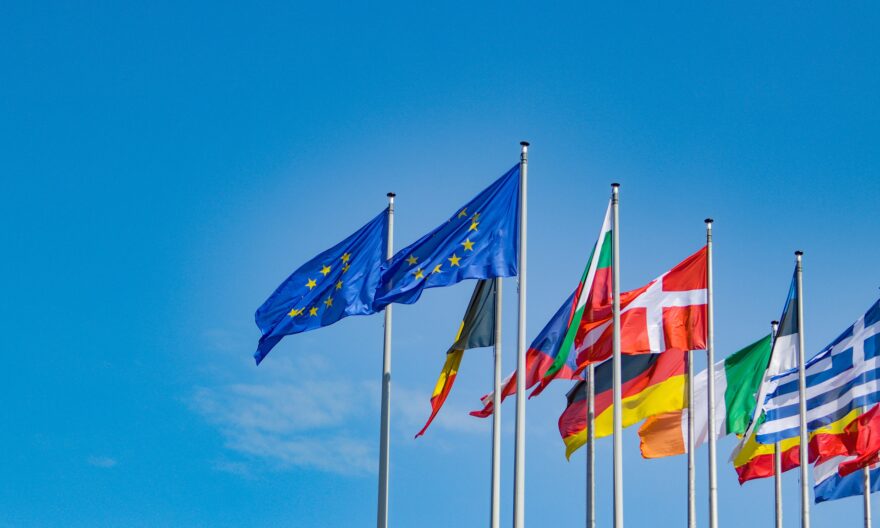
According to a new report by the European Commission, more work still needs to be done to ensure that the rules upholding the bloc’s single market are fully implemented on the ground. Indeed, by the Commission’s own admission, the single market is an “ongoing” project, in which some sectors remain particularly fragmented.
Given that directives which have not been correctly transposed into national law are currently at their highest ratio ever, and that the number of single market-related infringements reached 837 in 2020 – a 5% bump on the year previous – it’s clear that harmonizing legislation across the bloc is a priority. The digital and green transformations have been much hyped in Brussels over recent years, but the lax interoperability of technology, inadequate distinctions with regard to the circular economy, and unfavorable investment conditions are all holding the bloc back from synchronizing its marketplace and achieving its full potential.
EU lacks unified digital identity
Brussels has been very outspoken in its desire to foster a digital single market in the coming years – and in fairness, some key steps in the right direction have already been taken. Intra-roaming charges between member states are being abolished for another decade until at least 2032, for example, while the EU’s regulation on electronic authentication systems (eIDAS), introduced in 2014, was a well-meaning measure which has run into implementation issues. eIDAS has been plagued by poor uptake, patchy platform support, and a lack of operational standards, meaning that only 14% of key public service providers across all member states allow cross-border identification of an e-Identity system.
To address that pitiful shortfall, the EU has proposed a significant expansion of the e-ID system, instituting a scheme that not only encompasses a digital identity verifier, but also eSignature, eTimestamping, and eSealing services, among others. Of course, there will be significant obstacles ahead in bringing consumers, browsers, and service providers into alignment, as well as sidestepping the logistical pitfalls associated with the storage and security of the data in the eID wallets. However, the potentially immense benefits of introducing a single digital identity for all online services (as well as the overwhelming public support for one) make that a challenge well worth confronting.
Banging the circular economy drum
Elsewhere, the EU’s green goals aim high but also still require refinement. Industrial packaging, for example, might not often hit the headlines, but can play a vital role in the bloc’s ‘Fit for 55’ package, which targets slashing emissions by 55% before the end of the decade. Many of the items commonly used to store and transport goods, such as steel drums, plastic drums, and intermediate bulk containers (IBCs), can easily be cleaned, reused, and reconditioned, saving vast amounts of energy and expense in comparison to producing them anew or even recycling them.
Unfortunately, existing European legislation on waste management comprises a hodgepodge of laws and guidelines which are interpreted differently by each member state, creating divergent understandings of what constitutes “waste”. This, in turn, leads to many pieces of industrial packaging being simply discarded as waste, when they could easily have a lengthy lifespan ahead of them, yielding both economic and environmental savings.
The chances of addressing the issue head-on presented at COP26 were allowed to slip by, and even an ongoing revision of the EU’s Waste Shipment Regulation (WSR) looks set to miss its mark by conflating reusing with recycling and even lesser forms of recovery, such as incineration. The EU has often preached the benefits of a circular economy, but could do more concretely to promote reuse by harmonizing the market for and definition of waste across the European bloc.
Pan-European banking for a pan-European currency
Elsewhere, the financial sector is another work-in-progress when it comes to achieving across-the-bloc integration. While the European Central Bank (ECB) does serve as a single supervisor for all major banks within its jurisdiction, regulatory differences between individual operators mean that investors and shareholders are reluctant to venture outside their own national borders much of the time. This bottlenecked form of financing is entirely unnecessary and contributes to the fact that a mere 20% of European companies source their funding from capital markets, compared to 60% across the Atlantic.
Indeed, the fragmented nature of the EU’s banking scene has hampered its expansion and dynamism and, in the words of the chief of the European Banking Federation (EBF), holds the euro back from serving as a true competitor to the dollar. Quite aside from intercontinental competition, however, a pan-European coming-together of the bloc’s banks and capital markets could meet the €350 billion per annum shortfall which Brussels must address if it is to facilitate its green transformation of energy, transport, construction, and a whole host of other industries. Viewed from that perspective, the issue becomes as much an environmental one as an economic one.
Integration can unlock EU’s awesome potential
With a population of almost 450 million and a highly developed business infrastructure in place, the EU is one of the biggest trading powers on the planet, but it’s currently being prevented from realizing its full potential as a global actor due to continued inconsistencies in its rules and regulations. In particular, the areas of digital identity, industrial waste management, and banking provide plenty of room for improvement, with further harmonization revitalizing the bloc in a variety of ways.
Given that Brussels has been so vociferous about how its pursuit of both green and digital agendas is crucial to a successful recovery from the coronavirus pandemic, the time for putting these plans in motion is right now. The latest report from the Commission highlights its recognition of that fact, but it remains to be seen whether upcoming proposals, amendments, and initiatives can turn those intentions into actuality and make the EU a single market in deed as well as word.



